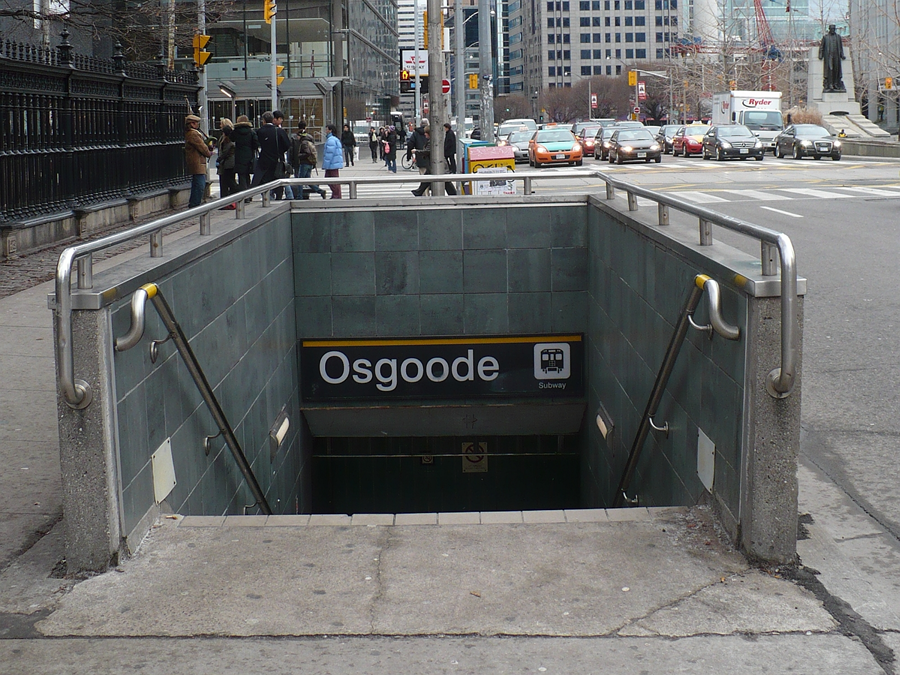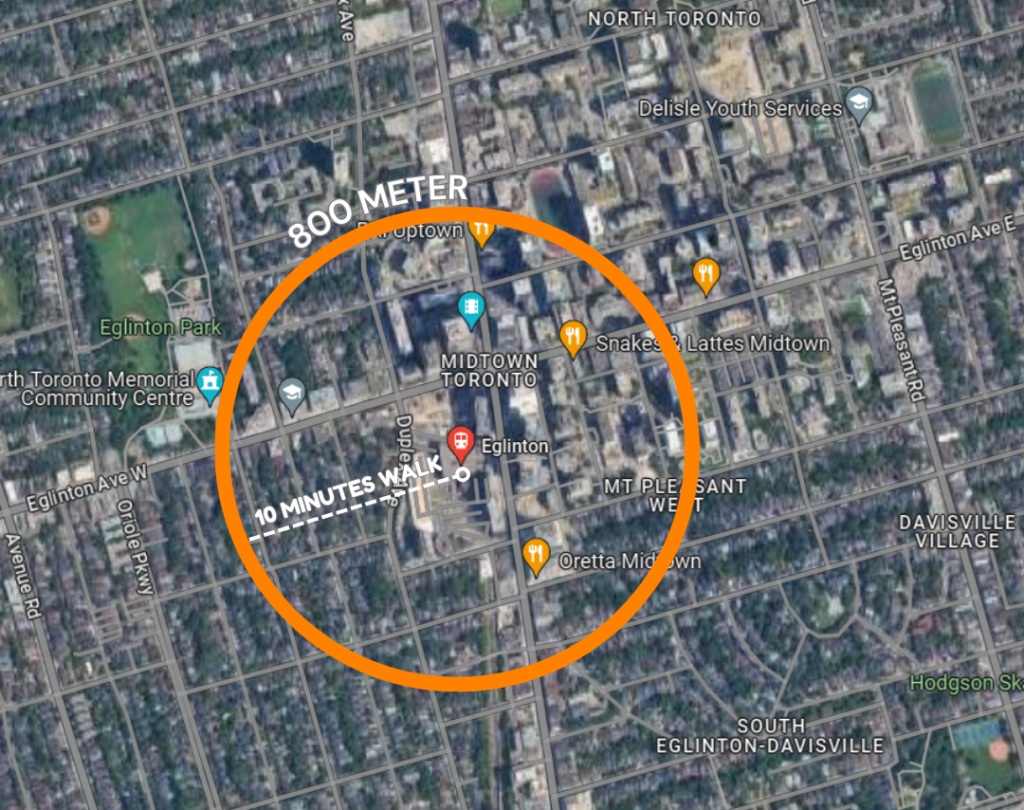Why Major Transit Stations Are Gold Mines for Real Estate Investors

Key Role of Major Transit Station Areas in Urban Expansion
Choosing the right location is critical when buying a pre-construction condo, as it greatly impacts the long-term value of your investment. Targeting areas on the brink of growth, especially those near transit hubs and new developments, can result in considerable value appreciation over time. This is why properties near Major Transit Station Areas (MTSAs) present a compelling investment opportunity.
These MTSAs are rapidly developing across the province, offering well-rounded communities with convenient access to transit. By investing in real estate close to these stations, you’re positioning yourself in a neighborhood destined for significant growth in the near future. Let’s delve into the concept of MTSAs and how investing in these areas could benefit you in the long run.
Read More: Why Major Transit Stations Are Gold Mines for Real Estate Investors
Understanding MTSAs
Major Transit Station Areas (MTSAs) are zones outlined under Ontario’s A Place to Grow Act: Growth Plan for the Greater Golden Horseshoe. These areas are situated within a 500 to 800-meter radius, roughly a 10-minute walk, from an existing or future transit route. MTSAs are designed to be dense, mixed-use neighborhoods that support public transit, offering convenient access to local amenities, employment opportunities, housing, and recreational activities.

The Ontario Growth Plan places a strong emphasis on MTSAs, acknowledging that transit development is essential to the region’s overall growth. The plan highlights the need for expanding transit networks and transit corridors within Urban Growth Centres and other key development areas. The province requires upper- and single-tier municipalities to collaborate with lower-tier municipalities to create detailed strategies for MTSAs along these corridors. This ensures that MTSAs become transit-friendly communities that maximize both the area and the number of transit users within walking distance of a station. As the Greater Golden Horseshoe continues to evolve, these MTSAs will play a pivotal role in supporting population and job growth for the foreseeable future.
A Closer Look at MTSAs
Development within Major Transit Station Areas (MTSAs) will be promoted, with consideration for:
a) Encouraging a broad range of uses, including more residential units and affordable housing options
b) Fostering partnerships between public and private sectors, such as collaborative development initiatives
c) Implementing alternative standards, such as lowering parking requirements
MTSAs will feature a variety of property types, from condominiums to rental apartments and townhomes, leading to the construction of more homes in proximity to these transit hubs. For investors, these areas present attractive opportunities, as they will offer a wider range of real estate options.
Moreover, the neighborhoods around current and planned transit stations are designed to support both transit and active transportation, creating a vibrant mix of uses and activities. This enhances the overall appeal for both residents and investors.
MTSAs Throughout the Region
Major Transit Station Areas (MTSAs) are a key focus in driving economic growth. While the City of Toronto has taken the lead in proposing the largest number of MTSAs, other municipalities are actively working to bring their own transit station areas to life.
As part of the Our Plan Toronto initiative, Toronto City Planning is introducing a draft proposal for over 180 MTSAs across the city, with 115 already on the table. Each MTSA is required to cover an area within a 500-800 meter radius, equivalent to a 10-minute walk, and meet specific density targets. Out of the 115 proposed MTSAs, 86 will be classified as Protected Major Transit Station Areas (PMTSAs), which we’ll discuss in more detail later. Some of the locations set to be part of Toronto’s MTSA network include Agincourt, Don Mills, Etobicoke North, Flemingdon Park, Humber College, King, and Sunnybrook Park, among others.

The Region of Peel
The Region of Peel is another major municipality moving forward with plans to develop Major Transit Station Areas (MTSAs). Through the Peel 2041 Regional Official Plan and the Municipal Comprehensive Review, the Region has outlined a strategy and policies to guide growth within MTSAs across Brampton, Caledon, and Mississauga. The final draft proposes 91 MTSAs: 2 in Caledon, 59 in Mississauga, and 30 in Brampton. Notable locations include Mississauga Road, Hurontario, Mavis, Mayfield West, the future Bolton GO Station, Creditview, Erin Mills, Port Credit GO, and others.
Following a similar approach to Toronto, Peel’s Official Plan aims to:
- Promote transit-supportive land use and manage future growth effectively
- Set minimum density targets for each MTSA
- Prioritize and classify transit station types, considering their timing and development needs
- Establish a framework to guide local municipalities in planning and implementing these MTSAs
Hamilton’s Vision for Major Transit Station Areas
Hamilton is actively working to develop thriving Major Transit Station Areas (MTSAs). The city is focusing on MTSAs in its lower region, planning for 17 LRT stations and three GO stations. Key areas set for development include McMaster, Longwood, Dundurn, Queen, West Harbour GO, Confederation GO, Wellington, and others.
In Hamilton, the density targets align with standard benchmarks: 160 people and jobs per hectare for LRT-serviced areas, and 150 people and jobs per hectare for those served by the GO transit rail network. To put this into perspective, a hectare is roughly 2.4 acres, equivalent to two football fields.
Burlington’s Strategy for Major Transit Station Areas
The City of Burlington is advancing its development plans with a focus on Major Transit Station Areas (MTSAs). The city is concentrating on area-specific plans (ASPs) for Aldershot GO, Burlington GO, and Appleby GO, aiming to transform these locations into key MTSAs.
As the province continues to expand its transit network, more regions will see the emergence of new Major Transit Stations, presenting significant growth and investment opportunities. Each MTSA will be assigned a density target to ensure it meets its development goals and thrives effectively.
Minimum Density Requirements
To ensure Major Transit Station Areas (MTSAs) meet their objectives, the Province has established minimum density targets that municipalities must aim to achieve. These targets are crucial for coordinating with the province and reaching the planned population densities, which include both people and jobs. The density targets for MTSAs are as follows:
- 200 people and jobs per hectare for subway stations
- 160 people and jobs per hectare for light rail transit stations
- 150 people and jobs per hectare for GO train stations
In cases where achieving these targets is not feasible, the Minister may approve a lower density target if it can be demonstrated that:
- Development is restricted by provincial policies or significantly limited within the designated area
- The area has a low number of residents and jobs
The Advantages of Investing Near Major Transit Station Areas (MTSAs)
Major Transit Station Areas (MTSAs) are a key focus in the A Place to Grow Act: Growth Plan for the Greater Golden Horseshoe, reflecting the region’s emphasis on transit-driven growth. MTSAs are designed to boost the economy, support urban development, and provide residents with exceptional convenience, making them prime investment opportunities.
Investing near MTSAs, particularly in pre-construction condominiums, can offer significant benefits. Early investment in a condo near an MTSA allows you to take advantage of the area’s development over time, maximizing potential returns.
MTSAs are crafted to foster vibrant communities where residents have easy access to housing, transit, and job opportunities. These areas are planned to be transit-friendly, with seamless multimodal access to stations and connections, making public transit both quick and convenient.
Moreover, MTSAs often feature enhanced infrastructure, including connections to local and regional transit services, active transportation amenities like sidewalks and bike lanes, secure bicycle parking, and designated commuter drop-off/pick-up zones. This comprehensive approach not only makes the area highly accessible but also increases its attractiveness to future residents and businesses.
In summary, investing near MTSAs offers a range of benefits, including location advantages and increased demand due to the area’s convenience and accessibility. This makes MTSAs an attractive choice for real estate investors looking to capitalize on future growth and desirability.
What Are Protected Major Transit Station Areas (PMTSAs)?
Among the 180+ Major Transit Station Areas (MTSAs) identified, some will be designated as Protected Major Transit Station Areas (PMTSAs). These areas are significant as they allow municipalities to implement Inclusionary Zoning policies. This policy mandates that new residential developments include a percentage of affordable housing, promoting mixed-income communities.
In addition to the general density requirements for MTSAs, the Province also mandates that municipalities establish minimum density targets for individual buildings or structures within PMTSAs. This approach aims to address affordable housing needs by ensuring that appropriate numbers of affordable units are included in new developments.
The Bottom Line on Investing in MTSAs
The Ontario Growth Plan prioritizes investing in and developing Major Transit Station Areas (MTSAs) as transit is central to the province’s expansion strategy. The development of MTSAs aims to optimize land use around transit hubs, ensuring that a significant number of potential transit users, job opportunities, and housing options are within walking distance. Investing in these thriving transit areas is a promising way to see your investments appreciate over time. As Ontario continues to grow, ongoing investments in transit infrastructure and MTSA development will support the region’s capacity to accommodate future growth for years to come.
Contact one of our Home Leader Agents today to discover more about investment opportunities near MTSAs!






